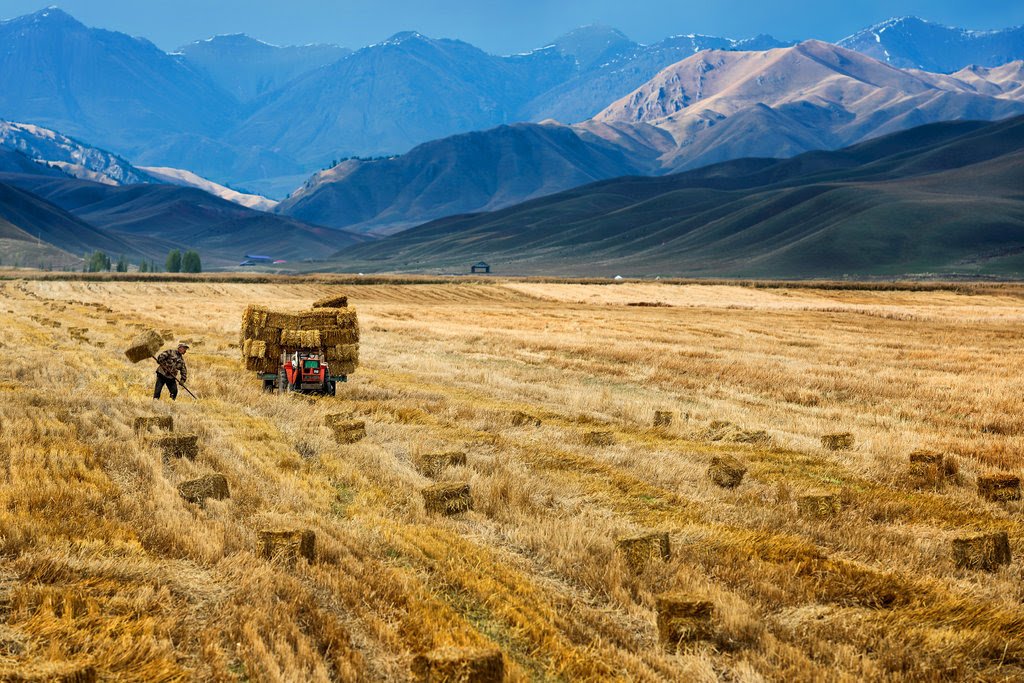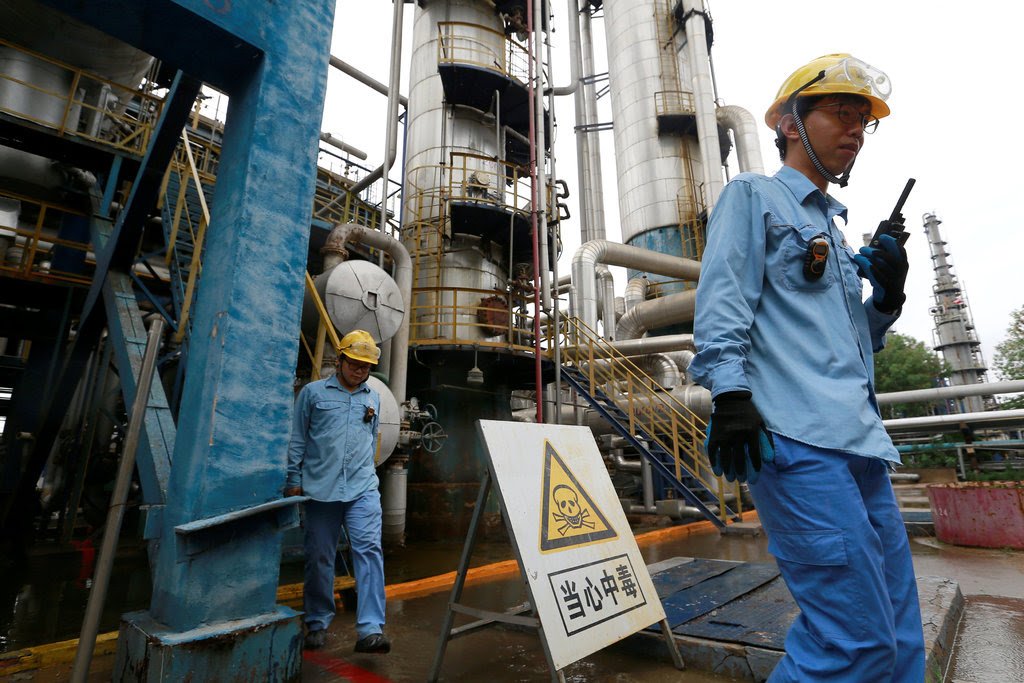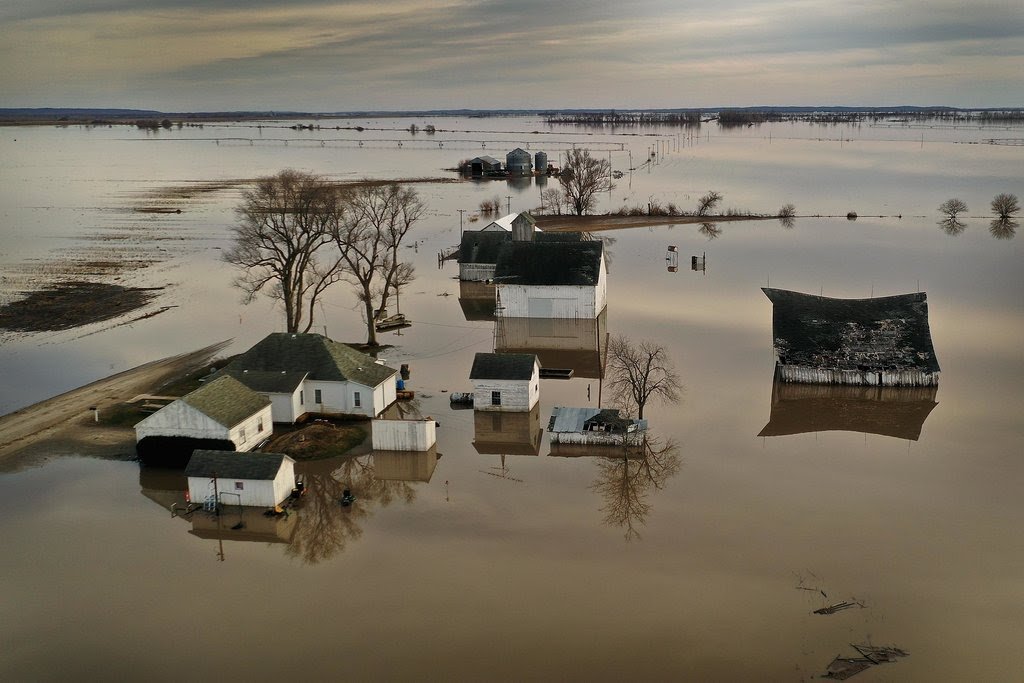Climate Change Threatens the World’s Food Supply, United Nations Warns
Christopher Flavelle
The New York Times
The world’s land and water resources are being exploited at “unprecedented rates,” a new United Nations report warns, which combined with climate change is putting dire pressure on the ability of humanity to feed itself.
The report, prepared by more than 100 experts from 52 countries and released in summary form in Geneva on Thursday, found that the window to address the threat is closing rapidly. A half-billion people already live in places turning into desert, and soil is being lost between 10 and 100 times faster than it is forming, according to the report.
Climate change will make those threats even worse, as floods, drought, storms and other types of extreme weather threaten to disrupt, and over time shrink, the global food supply. Already, more than 10 percent of the world’s population remains undernourished, and some authors of the report warned in interviews that food shortages could lead to an increase in cross-border migration.
A particular danger is that food crises could develop on several continents at once, said Cynthia Rosenzweig, a senior research scientist at the NASA Goddard Institute for Space Studies and one of the lead authors of the report. “The potential risk of multi-breadbasket failure is increasing,” she said. “All of these things are happening at the same time.”
The report also offered a measure of hope, laying out pathways to addressing the looming food crisis, though they would require a major re-evaluation of land use and agriculture worldwide as well as consumer behavior. Proposals include increasing the productivity of land, wasting less food and persuading more people to shift their diets away from cattle and other types of meat.
“One of the important findings of our work is that there are a lot of actions that we can take now. They’re available to us,” Dr. McElwee said. “What some of these solutions do require is attention, financial support, enabling environments.”
The summary was released Thursday by the Intergovernmental Panel on Climate Change, an international group of scientists convened by the United Nations that pulls together a wide range of existing research to help governments understand climate change and make policy decisions. The I.P.C.C. is writing a series of climate reports, including one last year on the disastrous consequences if the planet’s temperature rises just 1.5 degrees Celsius above its preindustrial levels, as well as an upcoming report on the state of the world’s oceans.
Some authors also suggested that food shortages are likely to affect poorer parts of the world far more than richer ones. That could increase a flow of immigration that is already redefining politics in North America, Europe and other parts of the world.
“People’s lives will be affected by a massive pressure for migration,” said Pete Smith, a professor of plant and soil science at the University of Aberdeen and one of the report’s lead authors. “People don’t stay and die where they are. People migrate.”
Between 2010 and 2015 the number of migrants from El Salvador, Guatemala and Honduras showing up at the United States’ border with Mexico increased fivefold, coinciding with a dry period that left many with not enough food and was so unusual that scientists suggested it bears the signal of climate change.


Barring action on a sweeping scale, the report said, climate change will accelerate the danger of severe food shortages. As a warming atmosphere intensifies the world’s droughts, flooding, heat waves, wildfires and other weather patterns, it is speeding up the rate of soil loss and land degradation, the report concludes.
Higher concentrations of carbon dioxide in the atmosphere — a greenhouse gas put there mainly by the burning of fossil fuels — will also reduce food’s nutritional quality, even as rising temperatures cut crop yields and harm livestock.
Those changes threaten to exceed the ability of the agriculture industry to adapt.
In some cases, the report says, a changing climate is boosting food production because, for example, warmer temperatures will mean greater yields of some crops at higher latitudes. But on the whole, the report finds that climate change is already hurting the availability of food because of decreased yields and lost land from erosion, desertification and rising seas, among other things.
Overall if emissions of greenhouse gases continue to rise, so will food costs, according to the report, affecting people around the world.
“You’re sort of reaching a breaking point with land itself and its ability to grow food and sustain us,” said Aditi Sen, a senior policy adviser on climate change at Oxfam America, an antipoverty advocacy organization.
In addition, the researchers said, even as climate change makes agriculture more difficult, agriculture itself is also exacerbating climate change.
The report said that activities such as draining wetlands — as has happened in Indonesia and Malaysia to create palm oil plantations, for example — is particularly damaging. When drained, peatlands, which store between 530 and 694 billion tons of carbon dioxide globally, release that carbon dioxide back into the atmosphere. Carbon dioxide is a major greenhouse gas, trapping the sun’s heat and warming the planet. Every 2.5 acres of peatlands release the carbon dioxide equivalent of burning 6,000 gallons of gasoline.
And the emission of carbon dioxide continues long after the peatlands are drained. Of the five gigatons of greenhouse gas emissions that are released each year from deforestation and other land-use changes, “One gigaton comes from the ongoing degradation of peatlands that are already drained,” said Tim Searchinger, a senior fellow at the World Resources Institute, an environmental think tank, who is familiar with the report. (By comparison, the fossil fuel industry emitted about 37 gigatons of carbon dioxide last year, according to the institute.)

Similarly, cattle are significant producers of methane, another powerful greenhouse gas, and an increase in global demand for beef and other meats has fueled their numbers and increased deforestation in critical forest systems like the Amazon.
Since 1961 methane emissions from ruminant livestock, which includes cows as well as sheep, buffalo and goats, have significantly increased, according to the report. And each year, the amount of forested land that is cleared — much of that propelled by demand for pasture land for cattle — releases the emissions equivalent of driving 600 million cars.
Overall, the report says there is still time to address the threats by making the food system more efficient. The authors urge changes in how food is produced and distributed, including better soil management, crop diversification and fewer restrictions on trade. They also call for shifts in consumer behavior, noting that at least one-quarter of all food worldwide is wasted.
But protecting the food supply and cutting greenhouse emissions can also come into conflict with each other, forcing hard choices.
For instance, the widespread use of strategies such as bioenergy — like growing corn to produce ethanol — could lead to the creation of new deserts or other land degradation, the authors said. The same is true for planting large numbers of trees (something often cited as a powerful strategy to pull carbon dioxide out of the atmosphere), which can push crops and livestock onto less productive land.
Planting as many trees as possible would reduce the amount of greenhouse gases in the atmosphere by about nine gigatons each year, according to Pamela McElwee, a professor of human ecology at Rutgers University and one of the report’s lead authors. But it would also increase food prices as much as 80 percent by 2050.
“We cannot plant trees to get ourselves out of the problem that we’re in,” Dr. McElwee said. “The trade-offs that would keep us below 1.5 degrees, we’re not talking about them. We’re not ready to confront them yet.”


Preventing global temperatures from rising more than 1.5 degrees Celsius is likely to require both the widespread planting of trees as well as “substantial” bioenergy to help reduce the use of fossil fuels, the report finds. And if temperatures increase more than that, the pressure on food production will increase as well, creating a vicious circle.
“Above 2 degrees of global warming there could be an increase of 100 million or more of the population at risk of hunger,” Edouard Davin, a researcher at ETH Zurich and an author of the report, said by email. “We need to act quickly.”
The report also calls for institutional changes, including better access to credit for farmers in developing countries and stronger property rights. And for the first time, the I.P.C.C. cited indigenous people and their knowledge of land stewardship as resources to be tapped. “Agricultural practices that include indigenous and local knowledge can contribute to overcoming the combined challenges of climate change, food security, biodiversity conservation, and combating desertification and land degradation,” the report’s authors wrote.
It comes at a time when indigenous people are currently under threat. According to a report released this year by the nonprofit organization Global Witness, which looks at the links between conflicts and environmental resources, an average of three people were killed per week defending their land in 2018, with more than half of them killed in Latin America.
Overall, the report said that the longer policymakers wait, the harder it will be to prevent a global crisis. “Acting now may avert or reduce risks and losses, and generate benefits to society,” the authors wrote. Waiting to cut emissions, on the other hand, risks “irreversible loss in land ecosystem functions and services required for food, health, habitable settlements and production.”
